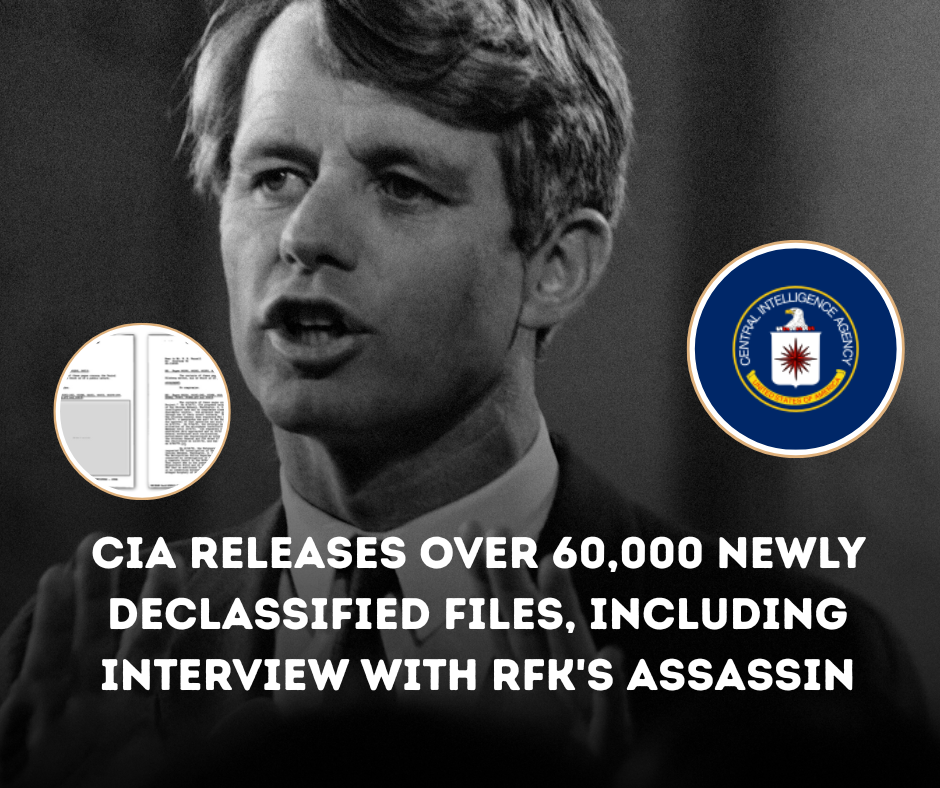In a remarkable release of historical information, the Central Intelligence Agency (CIA) has declassified more than 60,000 previously unreleased files, shedding light on decades of political, military, and intelligence activities. Among the most striking revelations is a never-before-heard interview with Sirhan Sirhan, the man convicted of assassinating Senator Robert F. Kennedy in 1968.
This rare interview is part of a broader effort to promote transparency and public access to historical documents that have long been hidden from view. For those who remember the turbulent 1960s—a decade marked by assassinations, civil unrest, and deep political division—this release offers a powerful and often emotional window into the past.
The Assassination That Shook a Nation
On June 5, 1968, just moments after claiming victory in the California Democratic primary, Robert F. Kennedy was shot at the Ambassador Hotel in Los Angeles. His death, at the age of 42, marked the second Kennedy assassination in a span of five years and devastated a nation still mourning President John F. Kennedy’s murder in 1963.
Sirhan Sirhan, a 24-year-old Palestinian immigrant, was arrested at the scene and later convicted of the crime. For decades, conspiracy theories have swirled around the assassination, with questions raised about motive, mental state, and possible outside influences.
The newly declassified interview with Sirhan—conducted under circumstances that have not yet been fully detailed—may offer fresh insights into one of the most painful chapters of American history.
What’s Inside the Declassified Files?
While the spotlight is on the RFK-related material, the 60,000 documents span multiple decades and touch on numerous topics, including:
- Cold War espionage operations
- Internal CIA communications about key political events
- Previously hidden reports on foreign interventions
- Interviews, interrogation transcripts, and psychological evaluations
Historians and researchers are already combing through the files for material that could rewrite, or at least refine, key parts of 20th-century history.
Why This Matters—Especially for Older Americans
For Americans aged 55 and older, many of these events are not just history—they’re memories. You may remember watching Robert F. Kennedy’s speeches, mourning his death, and feeling the weight of that moment in real time. Now, over five decades later, you have a chance to revisit those events with new information and a deeper understanding of the forces at play.
This release may also bring a sense of closure or validation for those who have long questioned the official narratives. Whether you’re a student of history, a former activist, or simply someone who lived through these pivotal years, this declassification is both a historic moment and a deeply personal one.
What Happens Next?
The files are now publicly accessible through the CIA’s online reading room, and experts predict it could take months, even years, to fully analyze the wealth of new information. Meanwhile, the public will be watching closely for new revelations, especially those that could impact how we understand the political assassinations of the 1960s.
As more details emerge—particularly about the interview with Sirhan Sirhan—there may be renewed calls to re-examine the RFK case, explore mental health aspects, or even reconsider past legal decisions.
The CIA’s declassification of these 60,000 files marks a turning point in public access to U.S. historical records. It reminds us that history is never static—new documents, voices, and truths continue to surface, inviting us to learn, reflect, and reframe what we thought we knew.
For those who lived through the Kennedy era, this release is a powerful opportunity to revisit the past—not just with emotion, but with fresh perspective and a chance to seek long-awaited answers.

Leave a Reply